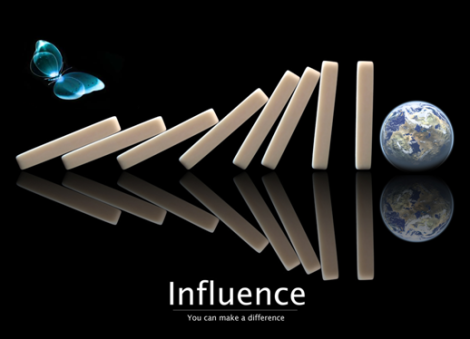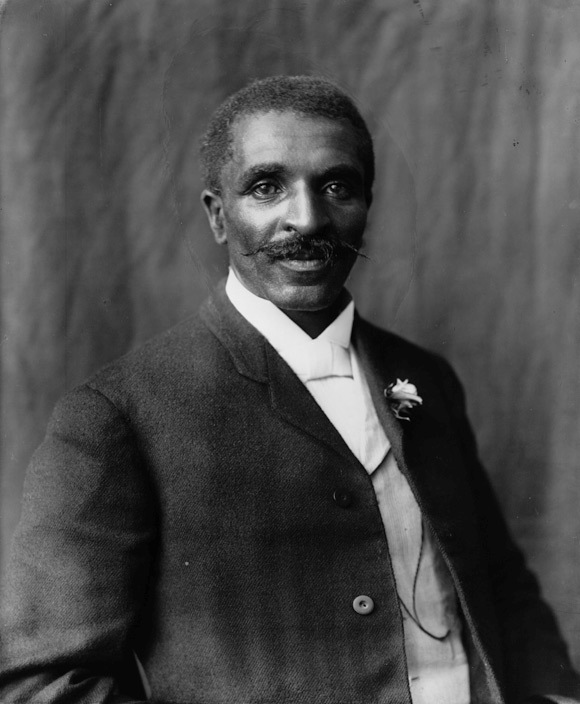
It took 30 years, but the scientific community finally embraced Edward Lorenz’ hypothesis that:
A butterfly could flap its wings and set molecules in motion, which would move other molecules of air, in turn moving more molecules of air – eventually capable of starting a hurricane on the other side of the planet.
What Lorenz called the Butterfly Effect became the much more scientific sounding Law of Sensitive Dependence Upon Initial Conditions. I prefer Lorenz’ much more poetic & compelling image of a butterfly’s wings setting off a chain of events that leads to a mighty storm.
In a frame on my office wall I keep the following quote, from James C. Hunter’s book The Servant: A Simple Story about the True Essence of Leadership.
How we behave as the boss at work today affects what goes on around the dinner table in other people’s homes tonight.
In other words, the actions we take, the words we use, the priorities we set begin the Butterfly Effect in the lives of followers, colleagues, clients and, according to the theory, everyone we encounter.
Influence & Impact
In his book titled The Butterfly Effect Andy Andrews tells two stories that illustrate the impact of our actions today on generations to come. First, he traces the decision made by a schoolteacher-turned-Civil War commander who quite possibly kept the U.S. from becoming fragmented into multiple nations. Andrews claims that without the Union win at Gettysburg the world would not have benefited from the U.S. allegiance that toppled Hitler during WW II.
 The second story involves the story of George Washington Carver, in reverse, that led to the development, generations after Carver, of a disease-resistant seed later that does well in arid climates and has consequently provided grain around the globe and saved an estimated 2 billion people.
The second story involves the story of George Washington Carver, in reverse, that led to the development, generations after Carver, of a disease-resistant seed later that does well in arid climates and has consequently provided grain around the globe and saved an estimated 2 billion people.
Still, soft work on the front end produces hard results on the back-end.
Andrews makes the point that the origin of that discovery can be traced back further and further to decisions that set future events in motion.
Making It Personal
Our own impact may or may not be so dramatic. We watch movies such as Freedom Writers, Mr. Holland’s Opus, Dead Poet’s Society and other inspirational tales of one person making a difference in the lives of many and our hearts are stirred.
But do we consider that we have the ability to do the same thing in the lives of our direct reports, peers and others?
When your name comes up around the dinner table, what is being said about you? If you were a fly on the wall, would you hear statements like, “He always shoots down my ideas and won’t give me a chance” or “She only cares about the bottom line and has to always do things her way”?
Hard Results Start Soft
Research from Gallup shows that what followers need most from leaders are trust, stability, hope, and compassion (Strengths Based Leadership, 2008). Luthans, Youssef & Avolio (Psychological Capital, 2007) identify efficacy (self-confidence), hope, optimism, and resiliency as “psychological capital” that can positively impact the workplace.
Positive butterfly effects from leaders, then, start with intentionally infusing hope, optimism, resiliency, trust and other positive traits into daily encounters with followers. In the midst of chaotic, stressful and sometimes impossible circumstances, leaders can create a legacy that positively influences the outcomes of other people’s lives with a ripple effect that goes on for generations to come.
Dr. Henry Cloud in his book Integrity writes
When a person travels a few years with an organization, or with a partnership, or any other kind of working relationship, he leaves a ‘wake’ behind in these two areas, task and relationship: what did he accomplish and how did he deal with people? And we can tell a lot about that person from the nature of the wake.
If we are going to leave a wake one way or another, why not be intentional about it? Why not choose the direction the molecules of our actions will travel? Why not decide to unleash a tsunami of hope, optimism, resiliency and trust?
——————–
Todd Conkright is Owner at Cornerstone Global Training & Performance Solutions
He serves his clients by building strategies that lead to net gains
Email | LinkedIn | Twitter | Web
Image Sources: (combination of desktop-wallpaper.org and farm4.static.flickr.com), geni.com/
Related articles
- Leadership and The Butterfly Effect (linked2leadership.com)
- The Butterfly Effect by Andy Andrews (fablefreak.wordpress.com)
- When the Butterfly Effect Took Flight (technologyreview.in)


[…] http://linked2leadership.com/2011/03/23/butterfly-effect-of-leadership/ […]
Great blog. Just want to repeat your best sentence: “… leaders can create a legacy that positively influences the outcomes of other people’s lives with a ripple effect that goes on for generations to come.”
Beautiful and it inspires me to be one of those people. : ) Thanks!
Janet
The Gabriel Center for Servant-Leadership
http://www.gabrielcenter.org
Brilliant article! I’ve shared it with all the managers in our organization. Extremely poignant.
Thank you very much!
GetJef =)
[…] See on linked2leadership.com […]